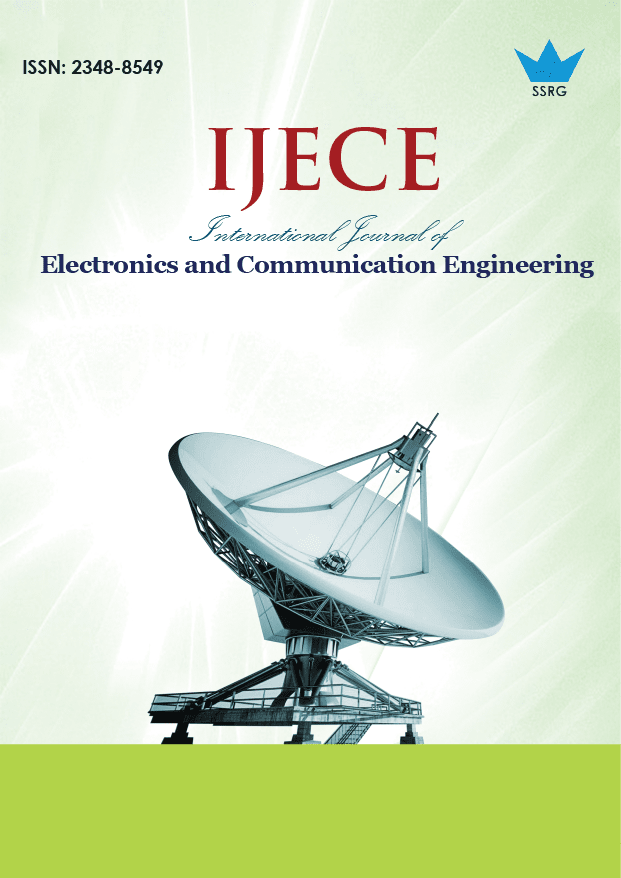Space Based Automatic Identification System (AIS) Receiver Architecture and its Performance in Collision Scenario

| International Journal of Electronics and Communication Engineering |
| © 2025 by SSRG - IJECE Journal |
| Volume 12 Issue 3 |
| Year of Publication : 2025 |
| Authors : D. Mallikarjuna Reddy, S. Anuradha, A. Swarna Bai |
How to Cite?
D. Mallikarjuna Reddy, S. Anuradha, A. Swarna Bai, "Space Based Automatic Identification System (AIS) Receiver Architecture and its Performance in Collision Scenario," SSRG International Journal of Electronics and Communication Engineering, vol. 12, no. 3, pp. 143-150, 2025. Crossref, https://doi.org/10.14445/23488549/IJECE-V12I3P114
Abstract:
An effective and innovative Automatic Identification System (AIS) receiver design for maritime surveillance applications is presented in this study. The frequency of the receiving signal, the collision time, and the power level of the signals for VHF channels of AIS 87 B & 88 B have all been changed for the proposed receiver architecture, and simulations have been run to assess how well it performs in these different message collision cases. The Doppler shift resulting from the LEO satellite’s orbital velocity at an altitude of 600–900 km, the signal transmission delay resulting from propagation time, as well as the signal power level based on the distance that the AIS transmission signals must travel have all been introduced to characterize the AIS receiver. Particularly in locations with a large density of ships, the suggested design in the present study is appropriate for creating an AIS receiver employing software-defined radio and on-board message processing capabilities that may be started on any Nanosatellite with better AIS signal decoding. Based on the simulation results, the sections below tabulate the efficiency of the suggested AIS receiver in the collision scenario when the AIS Transmit signals from two and three collided in various combinations due to varied signal characteristics.
Keywords:
AIS, CRC, CPM, GMSK, LEO, Maritime, PER, PPR, SOTDMA.
References:
[1] Rep. ITU-R M.2084, “Satellite Detection of Automatic Identification System Messages,” Report, pp. 1-38, 2006.
[Google Scholar] [Publisher Link]
[2] Sriram Jayasimha et al., “Satellite-based AIS Receiver for Dense Maritime Zones,” 9th International Conference on Communication Systems and Networks, Bengaluru, India, pp. 15-22, 2017.
[CrossRef] [Google Scholar] [Publisher Link]
[3] Recommendation ITU-R M.1371-5, “Technical Characteristics for an Automatic Identification System using Time Division Multiple Access in the VHF Maritime Mobile Frequency Band,” Report, pp. 1-148, 2014.
[Publisher Link]
[4] Omar Cherrak et al., “Joint Maximum Likelihood Sequence Estimation algorithm for Decollision of AIS Signals in Maritime Surveillance Context,” The Mediterranean Journal of Telecommunications, vol. 4, no. 2, pp. 14-19, 2014.
[Google Scholar] [Publisher Link]
[5] Paolo Burzigotti, Alberto Ginesi, and Giulio Colavolpe, “Advanced Receiver Design for Satellite-based Automatic Identification System Signal Detection,” International Journal of Satellite Communications and Networking, vol. 30, no. 2, pp. 52-63, 2012.
[CrossRef] [Google Scholar] [Publisher Link]
[6] P. Laurent, “Exact and Approximate Construction of Digital Phase Modulations by Superposition of Amplitude Modulated Pulses (AMP),” IEEE Transactions on Communications, vol. 34, no. 2, pp. 150-160, 1986.
[CrossRef] [Google Scholar] [Publisher Link]
[7] Li-Wei Chen, “Reduced-Complexity Coded GMSK Systems using Iterative Decoding,” Master Thesis, Department of Electrical and Computer Engineering, University of Toronto, pp. 1-108, 2000.
[Google Scholar] [Publisher Link]

 10.14445/23488549/IJECE-V12I3P114
10.14445/23488549/IJECE-V12I3P114